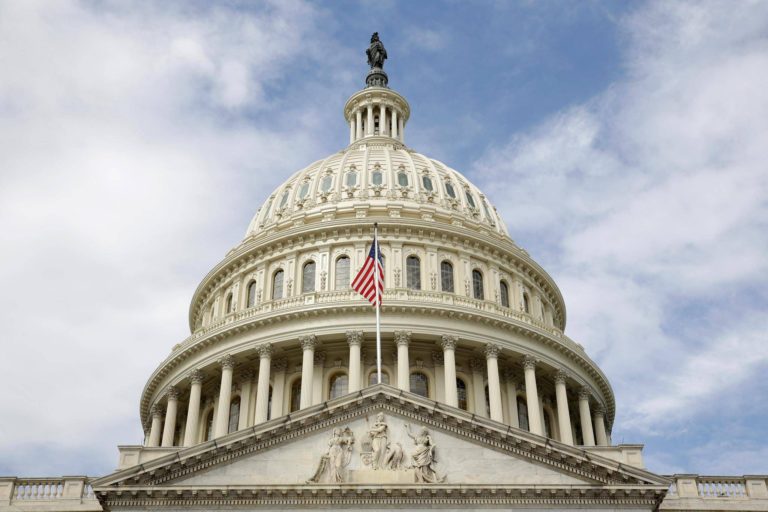Two-and-a-half cheers for May’s historic CRA actions

Originally published by The Hill May 29, 2018.
The Congress and President Trump set two historic precedents last week when they enacted a law overturning the Consumer Financial Protection Bureau’s (CFPB) illegal and misguided “guidance” on auto loans by car dealers.
Because Congress used the Congressional Review Act (CRA) to pass the resolution of disapproval the president signed on May 21, neither the CFPB nor any other agency can ever again issue a rule that is substantially similar to the one rejected, unless Congress authorizes it by another law. But that’s not the historic development; that’s just another wonderful feature of the CRA itself.
The first historic precedent established by what is now Public Law 115-172is that all agency “guidance documents” that impact the public are within the definition of a “rule” that Congress can overturn using the CRA’s streamlined procedures — regardless of whether the guidance documents are published in the Federal Register. As many readers know, the CRA eliminates the Senate filibuster on a resolution disapproving covered rules. The Senate’s final vote overturning the CFPB guidance was 51-47, so the CRA procedure made a difference.
There never should have been any doubt that the CRA’s broad definition of a rule covers agency guidance documents, since the text of the act and its legislative history make that crystal clear. Yet some people who didn’t read the law questioned if that was so. It is so!
There are thousands of covered guidance documents that have not yet been sent to Congress. Many are helpful to the public, and Congress and the president wouldn’t attempt to overturn them. But when agencies use guidance documents to short-circuit the rulemaking process and threaten the public, Congress can overturn them and bar anything substantially like them (in any form) ever again.
The second historic precedent established by Congress’s vote and the now-final law is that old rules not delivered to Congress as required by the CRA, whatever type, are not insulated from the CRA’s streamlined review procedures simply by the passage of time. This is the novel application of the CRA we first identified and which was publicized by Kimberley Strassel’s column and The Wall Street Journal’s editorial board last year.
There should have been no doubt about this application of the CRA, either. The consequence for rulemakers’ failure to follow the rules that apply to them is not to protect their rules from congressional review. The CRA’s first sentence bars rules not sent to Congress from taking effect, and its next section provides that Congress’s streamlined review period does not run (and cannot expire) when a rule is not sent to Congress. Thus, the thousands of old rules never sent to Congress remain vulnerable to CRA rejection by simple majority vote of Congress.
The only reason the CFPB precedent itself does not get three full-throated cheers is that the trigger the Senate used to begin debate on the CFPB resolution of disapproval was unusual. Sen. Pat Toomey (R-Pa.) deserves high praise for asking the Government Accountability Office (GAO) for an opinion whether the CFPB auto loan guidance was covered by the CRA and should have been sent to Congress. But by the time GAO issued its affirmative opinion, Mick Mulvaney was running the CFPB. Mulvaney should have complied with the law at that time and sent the CFPB rule to Congress. The Senate debate and vote didn’t wait for that.
Regardless of this new trigger for debate, a final majority vote in both houses of Congress on a resolution that the president signs unquestionably creates a valid law. The Constitution’s Rules Clause and the CRA both forbid judicial meddling in parliamentary procedures that precede a final vote in Congress. As long as the constitutional rules for lawmaking were followed — and they were — no court should hear a claim that the Senate procedures for debate preceding the final vote on a bill were misapplied.
And a final reason to cheer these developments is that Pacific Legal Foundation (PLF) recently filed two lawsuits to increase agency compliance with the CRA — to force them to submit old rules to Congress. The two lawsuits filed in Idaho and Kansas seek agency compliance with the CRA regarding different rules that were published in the Federal Register during the Obama administration but never sent to Congress:
- Tugaw Ranches v. Department of Interior (DOI) challenges the heavy-handed sage-grouse regulations, imposed in 2015, which impose severe restrictions on federal land use in the West. The rules undermine widely supported state-led conservation efforts at the expense of those who rely on federal lands for their livelihoods.
- Kansas Natural Resource Coalition v. DOI asks the U.S. Fish and Wildlife Service to lawfully submit the helpful Policy for Evaluation of Conservation Efforts (PECE) rule to Congress. This rule encourages states, local governments, property owners and environmentalists to collaborate on innovative conservation programs. The resulting management plans have helped people and species alike. Yet no one can lawfully rely on the PECE rule until it is sent to Congress.
As my colleague recently explained to The Hill readers: “Litigation over every rule illegally withheld from Congress easily could be avoided. President Trump needs only to direct agencies to review their compliance with the [CRA] and work with the White House and Congress to begin submitting those rules they have unlawfully withheld.”
With such review, last week’s historic precedents shows that the CRA can continue to generate desperately needed regulatory relief for many years.
Todd Gaziano, a leading authority on the Congressional Review Act, is the director of the Center for the Separation of Powers at Pacific Legal Foundation, which litigates nationwide to achieve court victories enforcing the Constitution’s guarantee of individual liberty.

